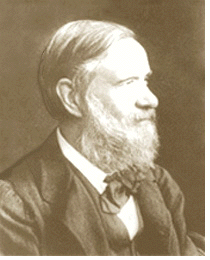...Best of Sicily presents... Best of Sicily Magazine. ... Dedicated to Sicilian art, culture, history, people, places and all things Sicilian. |
by Vincenzo Salerno | ||
Magazine Index Best of Sicily Arts & Culture Fashion Food & Wine History & Society About Us Travel Faqs Contact Map of Sicily |
Born in 1826 to a prosperous family (his father was a police magistrate), Stanislao attended medical school before choosing chemistry. At Pisa in 1845 and 1846, he assisted Raffaele Piria, who first prepared salicylic acid. Back in Palermo, he participated in the revolts of 1848, which spread to numerous European cities. In Sicily, this was a statement against the lack of tangible constitutional reforms promised by King Ferdinando II of the Two Sicilies. (In fact, the successive regime, the House of Savoy reigning over the Kingdom of Italy, with its shadowy democracy, offered little more, but the young Cannizzaro's activism reflected the spirit of the times.) Following the failure of these protests, Cannizzaro was forced to flee, and ended up in France for a couple years. In 1851, he was made professor of chemistry and physics at Alessandria (in Piedmont), part of the Savoys' pre-unification kingdom. There he discovered that benzaldehyde treated with concentrated alcoholic hydroxide produced equal amounts of benzyl alcohol and salt of benzoic acid. This was soon named the "Cannizzaro effect." As professor of chemistry at Genoa in 1855, he showed that the atomic weights of elements in volatile compounds could be calculated by applying Avogadro's Principle. He elaborated upon this in his Sunto, published in 1859, but, while building upon the foundation of research undertaken by various scientists over the course of fifty years, Cannizzaro's original work transcended Avogadro's in some important respects. Cannizzaro established values for atomic and molecular weights, incidentally distinguishing the two, designating the weight of hydrogen as the universal standard by which other elements should be measured. He demonstrated that vapor densities could be applied in determining atomic and molecular weights. This was remarkable work, and the periodic table of elements (formulated later) owes much to Cannizzaro's efforts. Moreover, the recognition of universal constants destroyed the prevailing concept that organic and inorganic chemistry functioned under differing principles. Today, it seems incredible that atoms (and elements) were not clearly distinguished from molecules (and compounds), but while others had postulated this theory long before Cannizzaro, he was one of the first to propose a new order based on a practical rule; this was soon embraced internationally. In those days, the distinctions between the sciences of chemistry and physics were not always clearly expressed; as a distinct field of academic study (though often coinciding with chemistry), physics really evolved in the last decades of the nineteenth century. By today's standards, Cannizzaro might be considered a "chemical physicist." In 1860, Cannizzaro actively supported the unification movement, and Garibaldi's revolt, in Sicily. He served briefly in the new Sicilian government, and helped to expand the chemistry department of the University of Palermo, where he remained until 1871. During the 1860s, he saw another series of bloody revolts --this time against the new government-- suppressed by northern Italian troops, but this failed to influence his strong loyalties to the unitary Italian state. Ever a political idealist, Cannizzaro accepted an appointment as senator in 1871 (when Savoyard forces occupied Papal Rome) and moved to Rome. He continued to work as an educator and politician. Brilliant as he was, Cannizzaro's political ideas were less inspired than his scientific ones. Senators were not elected but appointed by the king on the advice of the ruling party, making the Italian Senate, composed mostly of aristocrats and prominent industrialists (Cannizzaro was exceptional), little more than an organ that served to bolster the power of the established order. That a "new" Italy should be pieced together as a politically reactionary monarchy, considered by many to be a de facto police state, was a disappointment for Italians and foreigners alike. Senator Cannizzaro lived to witness Italian troops disgraced in defeat at Adwa (in Ethiopia) and the consequential fall of the government of his fellow Sicilian revolutionary, the cunning Crispi. Stanislao Cannizzaro died in Rome in 1910. About the Author: Palermo native Vincenzo Salerno has written biographies of several famous Sicilians, including Frederick II and Giuseppe di Lampedusa. | |
Top of Page |
 His niche is a small but important one. Palermo-born Stanislao Cannizzaro is a special footnote to nineteenth-century physical science. He was, according to some, one of the scientists responsible for bringing chemistry and physics out of the realm of alchemy and into the modern world.
His niche is a small but important one. Palermo-born Stanislao Cannizzaro is a special footnote to nineteenth-century physical science. He was, according to some, one of the scientists responsible for bringing chemistry and physics out of the realm of alchemy and into the modern world.